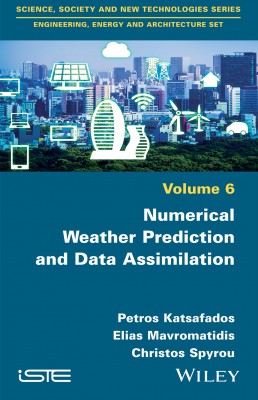
This book establishes a fundamental working knowledge of the theories and applications behind data assimilation and numerical weather prediction. It has been written to support under- and postgraduates in atmospheric or Earth sciences and introduces students to fundamental atmospheric dynamics and modeling. It also covers finite difference methods, numerical parameterizations and optimization techniques. All these objectives are given in an introductory and applied approach.
Elemental variational analysis on meteorological data assimilation is also examined. The modeling of the desert dust cycle in the atmospheric environment includes the emission patterns, advection methods and deposition processes.
The book concludes with real case studies simulating extreme weather events and a dust outbreak in hindcasting, nowcasting and forecasting modes. These cases have been chosen as paradigms of phenomena on different time and spatial scales; they reveal how such processes are eventually resolved in atmospheric simulators using state-of-the-art modeling systems.
1. The Primitive Equations.
2. Solving Methods in NWP Models.
3. Domain Structures and Boundary Conditions.
4. Introduction to Data Assimilation.
5. Desert Dust Modeling.
6. Simulations of Extreme Weather and Dust Events.
Petros Katsafados is Associate Professor in the Department of Geography at Harokopio University of Athens, Greece. His research interests include atmosphere and climate dynamics, numerical weather prediction and data assimilation.
Elias Mavromatidis is a laboratory teaching staff member in the Department of Geography at Harokopio University of Athens, Greece. He holds a PhD in cloud microphysics and is an expert on numerical weather prediction.
Christos Spyrou is a research associate in the Department of Geography at Harokopio University of Athens, Greece. He received his PhD in numerical modeling and his research interests include atmospheric modeling, air pollution modeling, weather forecasting and energy, climate and aerosol studies.